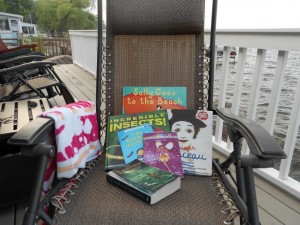Chapter 4: Intellectual Freedom by Suzanne Sannwald
and Dan McDowell|
Blog post by Suzanne
I’ve had a lot of anxiety entering the 2021-22 school year. I’ve felt concerned about COVID-19 with all of its variants, as well as with the uncertainty of being fully back on campus with students and staff who may or may not be vaccinated and may or may not be required to wear masks or follow other safety protocols.
I have also anticipated possible challenges we educators may face in opposition to what is perceived as related to “Critical Race Theory” (CRT). But, all of this has inspired me to reflect even more deeply on the importance of intellectual freedom as a core value of school librarianship that we must embrace always, and especially now.
Regarding attempts to legislate and control what historical and social curriculum can or cannot be taught, we are seeing how censorship is alive and well. And, we are having the opportunity to truly wrestle with the complexities of intellectual freedom when we consider how the same constituents who aim to censor teaching that is considered CRT-aligned have also asserted their own rights to freedom of speech in the face of what they have deemed to be “cancel culture.”
How is intellectual freedom defended only when considered convenient?  How do we create spaces and opportunities for our communities to share their voices when some voices infringe on the experienced safety of others in our communities?
How do we create spaces and opportunities for our communities to share their voices when some voices infringe on the experienced safety of others in our communities?
After all, if someone does not feel safe, are they able to truly experience and enact their own intellectual freedom?
With regard to the misinformation that has been rampant with COVID-19, we have also been reminded that intellectual freedom is not just a matter of what information is allowed or not allowed to be shared. Intellectual freedom is also about our capacity to be mentally free, to be able to think critically.
How can we help our students develop this capacity to think critically, especially when they (and their families) may hold contrary (at least to you) beliefs about what mental freedom looks like?
Just as I remind our students whenever they are working on research related to controversial issues, if these issues were easy to solve, then they wouldn’t be issues any longer and there wouldn’t be controversy.
So, I’m not claiming to have easy answers – or any answers at all for that matter – to the questions I have posed above. I share them so you may serve as my witnesses to this very real current struggle and so that you might join in conversation about what our work looks like as we act in the service of intellectual freedom.
Regardless of whether or not you or I end up experiencing a formal book or curriculum challenge during this next year, intellectual freedom is always at stake. This is a realization that became clear to me when researching and co-writing the chapter on Intellectual Freedom for Core Values in School Librarianship: Responding with Commitment and Courage.
In the many day-to-day decisions that we make for our school library programs, whether regarding cataloging and circulation or curriculum and instruction, we are either intentionally or unintentionally advancing intellectual freedom… or not.
Having acknowledged my anxiety about this school year, I choose to sit with the anxious feelings and embrace them as my impetus for intentionality. I can’t guarantee that every decision I make will be correct, but I do hope that overall, my mindful efforts will have a net positive impact when it comes to honoring the intellectual freedom of those I serve.
Reflection Question
What intention are you acting from? What impact will you have?
To learn and reflect more about core values that drive your professional practice, make sure to check out Core Values in School Librarianship: Responding with Commitment and Courage (Libraries Unlimited 2021).
Work Cited
Sannwald, Suzanne, and Dan McDowell. 2021. “Intellectual Freedom.” In Core Values in School Librarianship: Responding with Commitment and Courage, ed. Judi Moreillon, 55-72. Santa Barbara, CA: Libraries Unlimited.
About the Blogger
Suzanne Sannwald, MLIS, (she/her) has worked as a high school teacher librarian since 2014. She builds upon her previous education-related roles from middle school to higher education levels, serving as a certificated classroom teacher, classified library technician, district library supervisor, and student affairs technology manager. Suzanne earned both an MA in Teaching and Learning with Technology and an MLIS. She was a 2015-16 ALA Spectrum Scholar, 2016 California School Library Association Leadership for Diversity Scholar, 2017 school site Golden Apple Teacher of the Year, 2018-19 AASL Induction Program member, San José State University iSchool lecturer starting Fall 2020, and School Library Connection contributor. Suzanne has published articles and presented on topics including user experience, information literacy, collaboration, advocacy, and affirming students’ reading and larger lives. Connect with her on Twitter @suzannesannwald.




